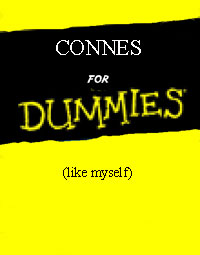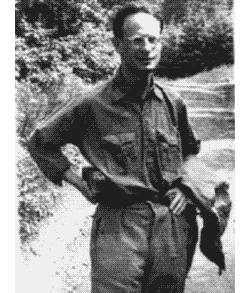 You may not have noticed, but the really hard work was done behind the scenes, resurrecting about 300 old posts (some of them hidden by giving them ‘private’-status). Ive only deleted about 10 posts with little or no content and am sorry I’ve self-destructed about 20-30 hectic posts over the years by pressing the ‘delete post’ button. I would have liked to reread them after all the angry mails Ive received. But, as Ive defended myself at the time, and as I continue to do today, a blog only records feelings at a specific moment. Often, the issue is closed for me once Ive put my frustrations in a post, and then Ill forget all about it. Sadly, the gossip-circuit in noncommutative circles is a lot, a lot, slower than my mood swings, so by the time people complain it’s no longer an issue for me and I tend to delete the post altogether. A blog really is a sort of diary. For example, it only struck me now, rereading the posts of the end of 2006, beginning of 2007, how depressed I must have been at the time. Fortunately, life has improved, somewhat… Still, after all these reminiscences, the real issue is : what comes next?
You may not have noticed, but the really hard work was done behind the scenes, resurrecting about 300 old posts (some of them hidden by giving them ‘private’-status). Ive only deleted about 10 posts with little or no content and am sorry I’ve self-destructed about 20-30 hectic posts over the years by pressing the ‘delete post’ button. I would have liked to reread them after all the angry mails Ive received. But, as Ive defended myself at the time, and as I continue to do today, a blog only records feelings at a specific moment. Often, the issue is closed for me once Ive put my frustrations in a post, and then Ill forget all about it. Sadly, the gossip-circuit in noncommutative circles is a lot, a lot, slower than my mood swings, so by the time people complain it’s no longer an issue for me and I tend to delete the post altogether. A blog really is a sort of diary. For example, it only struck me now, rereading the posts of the end of 2006, beginning of 2007, how depressed I must have been at the time. Fortunately, life has improved, somewhat… Still, after all these reminiscences, the real issue is : what comes next?
Some of you may have noticed that I’ve closed the open series on tori-cryptography and on superpotentials in a rather abrupt manner. It took me that long to realize that none of you is waiting for this kind of posts. You’re thinking : if he really wants to show off, let him do his damned thing on the arXiv, a couple of days a year, at worst, and then we can then safely ignore it, like we do with most papers. Isnt’t that true? Of course it is…
So, what are you waiting for? Here’s what I believe to be a sensible thing to try out. Over the last 4 years I must have posted well over 50 times what I believe noncommutative geometry is all about, so if you still don’t know, please consult the archive, I fear I can only repeat myself. Probably, it is more worthwhile to reach out to other approaches to noncommutative geometry, trying to figure out what, if anything, they are after, without becoming a new-age convert (‘connes-vert’, I’d say). The top-left picture may give you an inkling of what I’m after… Besides, Im supposed to run a ‘capita selecta’ course for third year Bachelors and Ive chosen to read with them the book The music of the primes and to expand on the mathematics hinted only at in the book. So, I’ll totally immerse myself in Connes’ project to solve the Riemann-hypothesis in the upcoming months.
Again, rereading old posts, it strikes me how much effort I’ve put into trying to check whether technology can genuinely help mathematicians to do what they want to do more efficiently (all post categorized as iMath). I plan some series of posts re-exploring these ideas. The first series will be about the overhyped Web-2 thing of social-bookmarking. So, in the next weeks I’ll go undercover and check out which socialsites are best for mathematicians (in particular, noncommutative geometers) to embrace…
Apart from these, admittedly vague, plans I am as always open for suggestions you might have. So, please drop a comment..
2 Comments However,
However,